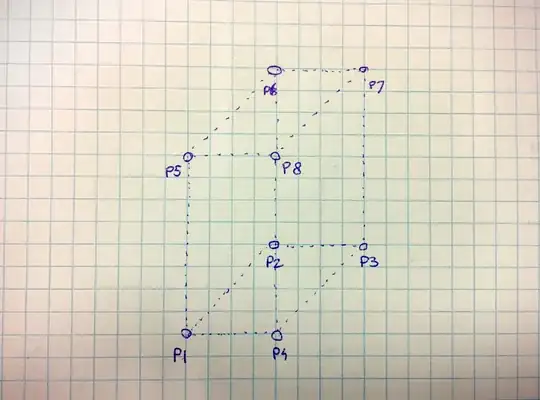I am having a hard time figuring out if a 3D point lies in a cuboid (like the one in the picture below). I found a lot of examples to check if a point lies inside a rectangle in a 2D space for example this on but none for 3D space.
I have a cuboid in 3D space. This cuboid can be of any size and can have any rotation. I can calculate the vertices $P_1$ to $P_8$ of the cuboid.
Can anyone point me in a direction on how to determine if a point lies inside the cuboid?
